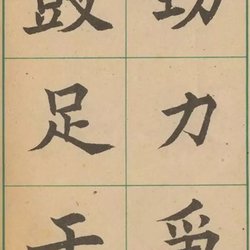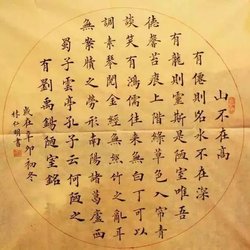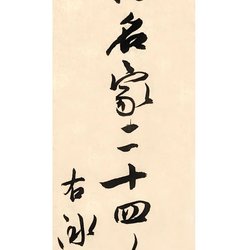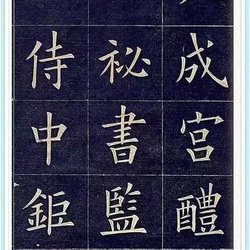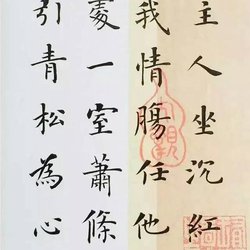Starting from these characteristics, let’s compare the performance and usage differences of several pens.
1.1 Pencil - a useful tool for beginners, with strong expressiveness of stroke thickness
In the process of hard-pen calligraphy writing, the biggest feature of pencil is its strong expressive power. Even if it is the same pencil, the lines written with different pressure will have different shades of color. In other words, in addition to showing changes in thickness of strokes, it can also show changes in shades of color. Therefore, pencil strokes have a stronger sense of layering and can express far richer textures than other similar writing tools.
But on the contrary, its shortcomings are also quite obvious. Because during the writing process, handwriting is formed by graphite adhering to the paper. It cannot eat ink into the paper like a pen. So it fades very easily and is inconvenient to store.
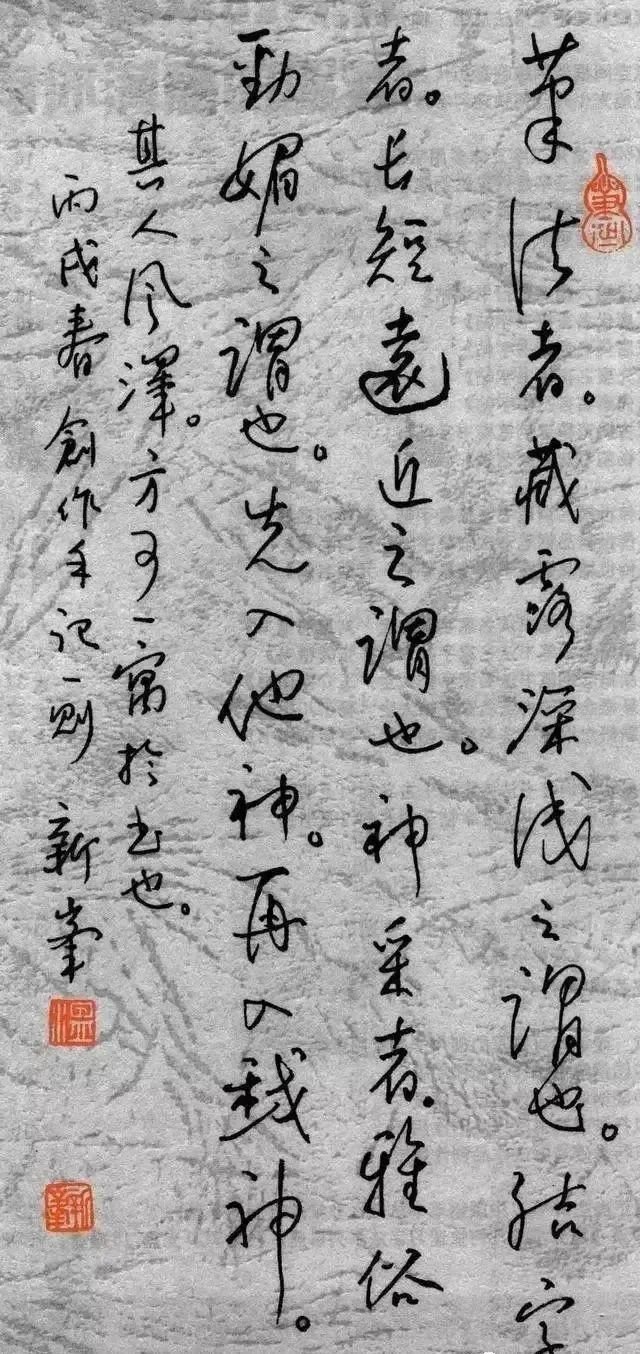
1.2 Ballpoint pen - difficult to use, can be thrown away. After explaining one type of pen in detail, the characteristics of other pens will be easier to explain clearly.
Most ballpoint pens use oil-based ink, which can not only express changes in the thickness of the strokes, but also express changes in the depth of the color to a certain extent.
But the reason why the ink of the ballpoint pen can flow to the paper is because the ink first flows to a small ball inside the pen tip; during the writing process, the ball rotates and brings the ink to the pen tip and paper. The problem caused by this design is that as the time of use increases, the ball will wear to a certain extent, making the written strokes thicker.
In addition to the strokes of ballpoint pens becoming thicker and thicker as the number of writing times increases, the color of ballpoint pens is often lighter due to the characteristics of oil-based ink itself. Because the changes in stroke weight and depth are smaller than those of a pencil, it is also relatively difficult to control. Therefore, the frequency of ballpoint pens appearing in the market has also decreased in recent years.

1.3 Gel pens - cost-effective, easy to obtain, and easy to write with. It seems that without realizing it, gel pens have become a new star in the world of writing tools in recent years. Generally speaking, gel pens produce ink smoothly and the weight of strokes is easy to control; therefore, they are easy to use and have strong controllability.
Relatively speaking, the unsatisfactory point of gel pens is that the strokes cannot reflect the changes in shades, and the thickness changes of the strokes are smaller than those of fountain pens. Due to the limitations of the production process, the expressive ability of gel pen refills generally exceeding 0.5cm becomes weak, and it is impossible to write as desired as there is or is not a stringing effect. This feature also limits the size of the fonts written by the gel pen. The written characters are generally slightly smaller, which is not suitable for expressing the details of single characters.
Of course, its biggest advantage is its low price and convenience. For me, I am especially fond of it because it has such a nice nickname as gel pen.

1.4 Fountain pen - the kingly rule, pick a good one and get familiar with it. As the veteran of hard-pen calligraphy writing tools, as of now, its status is still unshakable. The process of writing itself is a process of constant adjustment between the writer and the writing tools. The pen has a long service life and has natural advantages in the process of running in with the user. Because the pen barrel is mostly made of metal, it feels extremely heavy when used. When the pen is swayed on the paper, it often feels like galloping on the battlefield with a spear and a huge sword. In addition, I personally think that because the open-tip pen is more elastic, its use effect is better than that of the dark-point pen. Moreover, the tip of the dark-point pen is thicker, which will block the writer's sight to a certain extent and make it difficult to write.
The matter of purchasing a fountain pen has been well-prepared by previous generations. What I would like to add is that, in a sense, a fountain pen can be called a lifelong companion of the writer. So if you are a working friend, my suggestion is to try enough fountain pens first to choose the true one. Suit your own type. Then, as long as your purchasing power allows, choose the most expensive one. When your fingers hold the pen, all they provide for the pen is the pressure on the pen barrel. In the direction perpendicular to the paper, this pressure only affects the maximum static friction force of the fingers on the pen.
As for the static friction force of the pen, it is enough as long as the combined forces of the pen's gravity and the elastic force of the paper facing the pen cancel each other out. No matter how hard a person holds the pen, it will not affect the stress on this vertical surface; on the contrary, if the pen is held too hard, the writing will be inflexible and difficult, and the written words will appear stiff and devoid of spirituality.
The way to hold water pens such as gel pens and rollerball pens is basically the same as holding pencils. However, because the gel pen transports ink to the paper through liquid capillary action, it is easier to write strokes, so the pen can be held lighter. The second point mentioned in the picture, that the index finger should be bent in two sections and not in three sections, can be ignored.
The way you hold a pen is different from the way you hold a pencil. The difference is that when a pencil gel pen is writing, the effective force on the paper is perpendicular to the paper; while a pen presses the steel piece of the pen tip to deform the pen tip and ink is injected from between the steel pieces. onto paper. Therefore, during the pen writing process, the effective force should be the force that deforms the steel sheet, not the force perpendicular to the paper surface.
As shown in the picture:

Therefore, the key to holding a pen is: the penholder should rest on the tiger's mouth; not on the metacarpophalangeal joint of the index finger as before when holding a pencil. The angle between the pen and paper is about 40-65 degrees.



